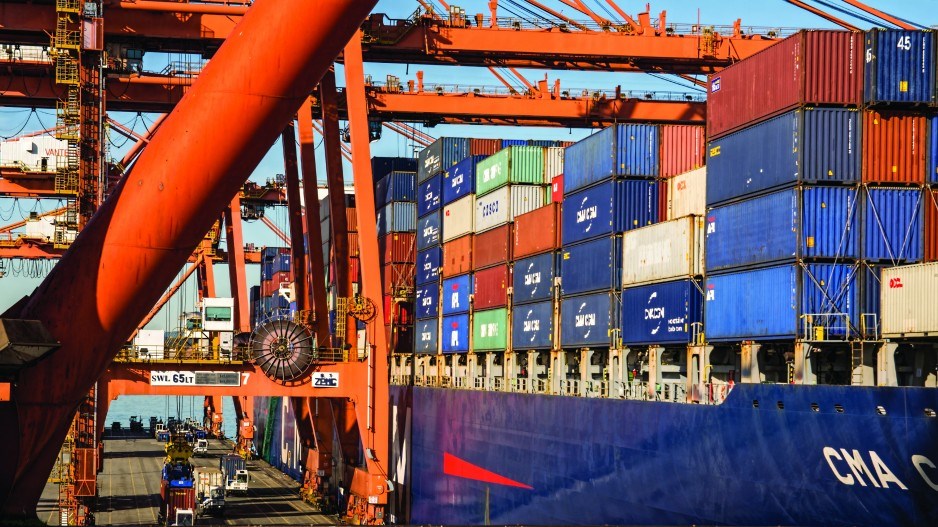The Roberts Bank landlord and its largest tenant agree that Deltaport needs to expand its container cargo handling capacity, but they disagree on how that should be achieved.
That is creating an awkward situation out Tsawwassen way – especially for the tenant.
Vancouver, now a top-50 global container port, has aspirations to move higher up that top-50 list. Geography and goods moving efficiency are on its side. But the Vancouver Fraser Port Authority (VFPA) knows a capacity crunch looms large on the horizon. Competition for transpacific goods movement is accelerating, not only at Seattle--Tacoma, Los Angeles-Long Beach and other major West Coast North American ports but also along the continent’s Gulf Coast and eastern seaboard.
The status quo is therefore not an option.
The VFPA’s multibillion-dollar bet on how best to provide that capacity is riding on Terminal 2.
The price tag here is between $2 billion and $3 billion. It’s a bold roll of the dice for the VFPA, which would fund the creation of the offshore land base needed for the new terminal.
Terminal 2 would add 2.4 million 20-foot-equivalent units (TEUs) to the port’s annual container handling capacity. That is significant considering that the Port of Vancouver handled approximately 3.4 million TEUs in 2018.
The VFPA’s Terminal 2 sales pitch projects robust transpacific container cargo growth for B.C.
But not all industry analysts agree on transpacific cargo growth numbers.
Maersk (CPH
It added that the growth outlook for global container trade is projected to deteriorate to between 1% and 3% in 2019.
The negative effects of an unresolved China-U
And not all container terminal operators agree on the need to add so much capacity in a single
The VFPA’s major container terminal tenant at Roberts Bank is pushing a less expensive Terminal 2 alternative.
Global Container Terminals (GCT), Canada’s largest container terminal operator and its largest maritime employer, wants to expand GCT Deltaport.
Deltaport Berth 4 would add roughly two million TEUs to the annual capacity of 2.4 million TEUs at GCT’s Roberts Bank terminal.
The price tag, according to GCT president and CEO Doron Grosman, is around $1 billion.
He added that it would dovetail with other container cargo capacity expansion projects underway or planned for B.C.
Deltaport Berth 4 faces the same environmental and infrastructure approval scrutiny that Terminal 2 has been navigating for the past six years, and in an email response to Business in Vancouver, the port said that any Deltaport expansion would require years of planning and environmental work to get to the federal review stage. That, the port said, would “make it very difficult for GCT to meet demand that is just a few years away.”
The port, through its Terminal 2 project, also wants to add another terminal operator to “ensure healthy competition and that users continue to pay reasonable rates for reliable services.”
The competing aspirations for the two projects set up what could be a major landlord-tenant dispute.
Under the current port management structure in Canada, it’s a disagreement that GCT would be hard pressed to win.
However, in March 2018, Transport Canada launched a review of the country’s port authority system. The review could change Canada’s port landlord-tenant relationships and how they are managed.
In a letter filed February 8
GCT’s Berth 4
However, the VFPA maintains that the Terminal 2 operator, not the port authority, will be GCT’s competitor.
Its Terminal 2 pitch also claims that a GCT Deltaport expansion is a non-starter because:
•“Fisheries and Oceans Canada has prohibited further land reclamation inland from Deltaport”; and
•“
“At the end of the day, what we are saying is that we have a staged capacity investment in Deltaport that is funded by private
He added that Deltaport Berth 4 would not preclude the eventual addition of Terminal 2.
“The way we think about this is pretty simple.
@timothyrenshaw




